10 Proven Beach Meditation Tips to Calm Your Mind
Beach Meditation: Finding Peace Where the Ocean Meets the Soul
Have you ever stood at the edge of the ocean and felt an immediate sense of calm wash over you? There’s something almost magical about the beach—the rhythmic crashing of waves, the salty breeze kissing your skin, and the endless horizon that seems to stretch into infinity. Now, imagine harnessing that natural tranquility through beach meditation. Welcome to the world of beach meditation, where nature becomes your meditation teacher and the ocean your guide to inner peace.
Table of Contents
What Is Beach Meditation?
The Essence of Meditating on the Beach
Beach meditation is exactly what it sounds like—practicing mindfulness and meditation techniques in the coastal environment. But it’s so much more than just sitting cross-legged on sand. When you’re meditating on the beach, you’re engaging all your senses in a symphony of natural elements. The sound of waves becomes your mantra, the warmth of the sun your gentle reminder to stay present, and the vast expanse of water your visual anchor.
Unlike meditating in a quiet room where you might struggle to quiet your mind, the beach offers built-in focal points. The environment naturally supports your practice, making it easier for both beginners and experienced meditators to drop into a meditative state. It’s like having nature hold your hand through the entire process.
Why the Beach Environment Enhances Meditation
What makes the beach such a powerful meditation spot? Science and spirituality agree on this one. The natural elements create what researchers call a “soft fascination”—your attention is gently held without overwhelming your senses. The repetitive sound of waves activates your parasympathetic nervous system, telling your body it’s safe to relax.
Plus, beaches are liminal spaces—those magical in-between zones where land meets water, earth meets sky. These transitional environments have been considered sacred in many cultures precisely because they help us access transitional states of consciousness. When you’re meditating at the beach, you’re literally positioning yourself at the threshold between different worlds, making it easier to access deeper states of awareness.
The Benefits of Beach Meditation
Physical Health Benefits
Let’s talk about what beach meditation does for your body. First, there’s the vitamin D from sunshine exposure, which boosts your immune system and improves bone health. The fresh ocean air, rich in negative ions, increases oxygen absorption and helps balance serotonin levels—your body’s natural mood stabilizer.
The grounding effect of walking barefoot on sand—a practice called “earthing”—has been shown to reduce inflammation and improve sleep quality. And if you’re doing walking meditation along the shore, you’re getting gentle exercise that strengthens your core and improves balance without even thinking about it.
Mental and Emotional Wellness
Here’s where beach meditation really shines. The coastal environment naturally reduces cortisol, your stress hormone. Studies show that just twenty minutes near the ocean can significantly lower anxiety levels. When you combine that with intentional meditation practice, you’re giving your mental health a double boost.
The vastness of the ocean puts your problems in perspective. Ever notice how your worries seem smaller when you’re gazing at an endless horizon? That’s not just poetic—it’s your brain recalibrating its sense of scale and importance. Regular beach meditation can help with depression, improve focus, and increase emotional resilience.
Spiritual Connection and Grounding
Many people report profound spiritual experiences when meditating on the beach. There’s something about the ancient, eternal quality of the ocean that connects us to something greater than ourselves. Whether you’re religious, spiritual, or simply seeking a sense of connection, the beach offers a natural cathedral.
The elements themselves become spiritual teachers. Water teaches us about flow and adaptability. The horizon reminds us of limitless potential. The tide demonstrates the natural rhythms of change. When you’re meditating at the beach regularly, these lessons seep into your consciousness without force or effort.
Experience the serene power of the ocean — listen to the same meditation music used by gurus and yogis on the beach, and awaken your inner peace today Buy Premium Meditation Music Now
Long Beach Meditation: A Coastal Haven for Mindfulness
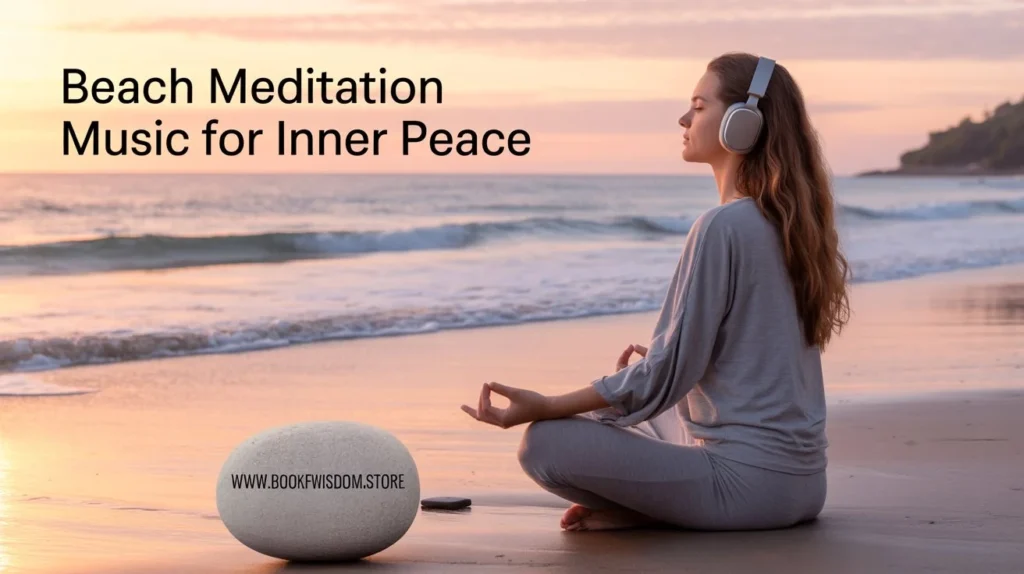
Why Long Beach, CA Is Perfect for Meditation
Long Beach, California, has emerged as a meditation mecca for good reason. This coastal city offers miles of accessible shoreline with diverse beach environments—from quiet coves perfect for solitary practice to expansive stretches ideal for walking meditation. The consistent California weather means you can practice year-round without the harsh seasonal interruptions common in other coastal areas.
The Long Beach community has embraced mindfulness culture, creating an environment where beach meditation isn’t seen as strange but celebrated. You’ll find everything from formal meditation classes to informal groups of practitioners who gather at sunrise. The city’s progressive attitude toward wellness makes it an ideal place to explore meditating on the beach without feeling self-conscious.
Popular Meditation Spots in Long Beach
If you’re planning long beach meditation sessions, several locations stand out. Belmont Shore offers a quieter, residential beach vibe perfect for early morning practice. The stretch near Junipero Beach provides a beautiful backdrop without heavy tourist traffic. Alamitos Beach, near the peninsula, gives you stunning views and often has fellow meditators who create a supportive energy.
For those seeking guided experiences, several wellness centers in Long Beach offer beach meditation classes. These typically meet at designated spots along the shore, providing instruction while taking advantage of the natural setting. Check local listings for “long beach meditation long beach ca” to find current schedules and meet-up points.
Experience the serene power of the ocean — listen to the same meditation music used by gurus and yogis on the beach, and awaken your inner peace today Buy Premium Meditation Music Now
How to Prepare for Beach Meditation
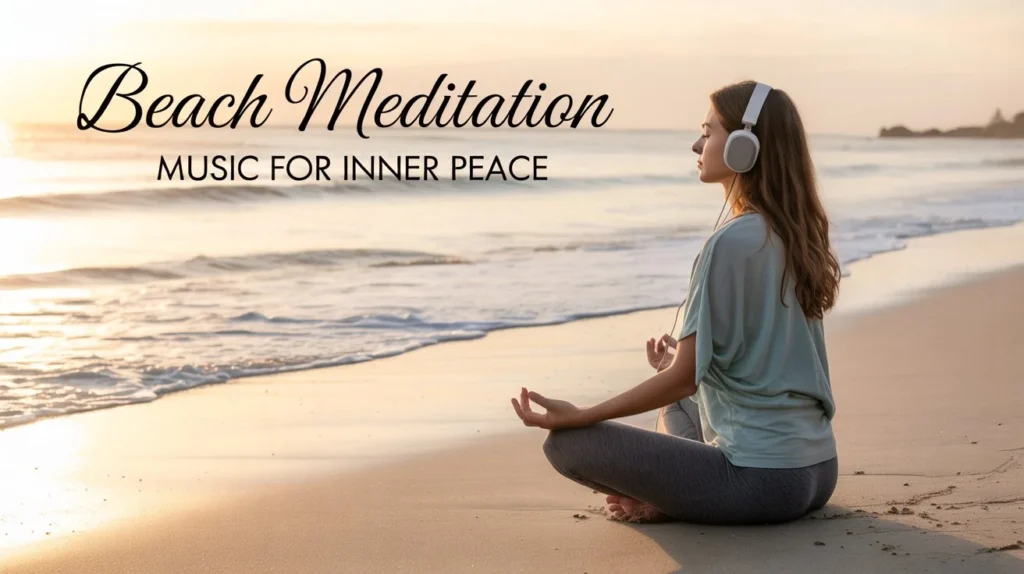
What to Bring
You don’t need much, but a few items can enhance your beach meditation experience. A lightweight meditation cushion or folded towel protects you from damp sand while maintaining your connection to the earth. Bring a light blanket if you’re meditating during cooler hours or windy conditions.
Sunscreen is non-negotiable unless you’re practicing at dawn or dusk. A wide-brimmed hat and sunglasses protect you during longer sessions, though you might remove them once you close your eyes. A water bottle keeps you hydrated, and a small journal lets you capture insights immediately after your practice.
Consider leaving technology behind or at least silencing it completely. The whole point is to disconnect from digital noise and reconnect with natural rhythms. If you’re using your phone for a meditation timer, switch it to airplane mode.
Choosing the Right Time of Day
Timing dramatically affects your beach meditation experience. Sunrise meditation offers symbolic power—you’re literally starting your day as the world awakens. The beach is typically quieter, the light is magical, and there’s something soul-stirring about watching darkness transform into day while in meditation.
Sunset brings its own medicine. The descending sun invites reflection and release, making evening sessions ideal for letting go of the day’s stress. Midday can work if you find a shaded spot, but the heat and crowds might challenge your focus.
Low tide often provides more comfortable spaces and interesting meditation spots like tide pools and revealed sand bars. Check local tide tables when planning your session, especially if you’re doing walking meditation along the waterline.
Finding Your Perfect Spot
Location matters more than you might think. Look for a spot far enough from the water to avoid surprise waves but close enough to hear them clearly. A slight elevation—even just a small berm—can provide better airflow and a more expansive view.
Consider the sun’s position relative to where you’ll face. Directly staring into sunrise or sunset can be distracting (and damaging to your eyes), so position yourself for an angled view. Notice the wind patterns and choose a spot with some natural windbreak if possible, or embrace the wind as part of your practice.
Scout your location before sitting down. Check for shells, rocks, or debris that might dig into you during longer sessions. Notice whether others tend to pass through that area frequently. The perfect spot balances accessibility with a degree of seclusion.
Experience the serene power of the ocean — listen to the same meditation music used by gurus and yogis on the beach, and awaken your inner peace today Buy Premium Meditation Music Now
Techniques for Meditating on the Beach
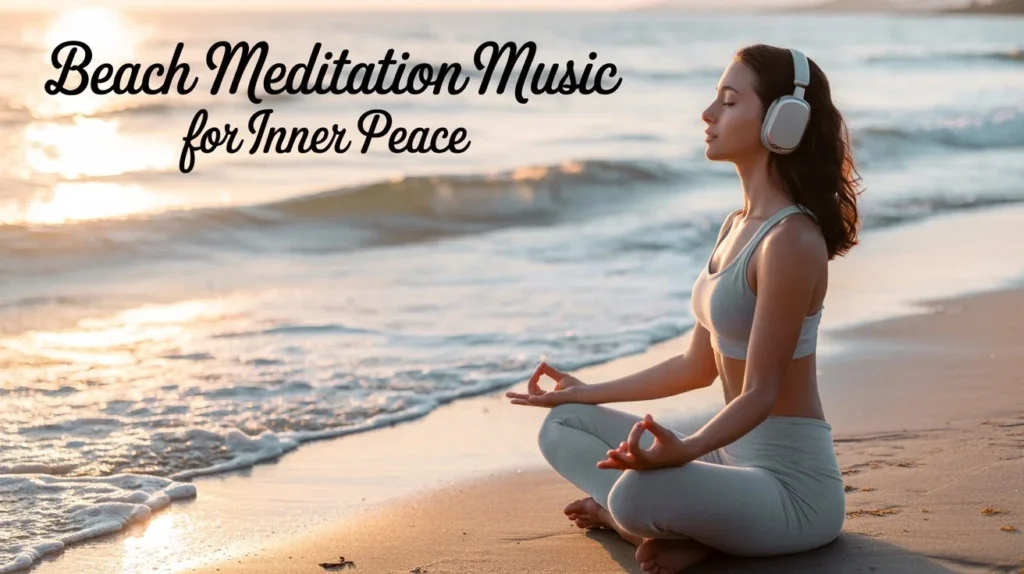
Breath Awareness Meditation
The most fundamental technique works beautifully at the beach. Sit comfortably and close your eyes, bringing attention to your natural breath. Notice the rhythm of your breathing, then gradually become aware of how it syncs with the sound of the waves. You might find your breath naturally lengthens to match the ocean’s rhythm.
As thoughts arise—and they will—imagine them as waves that come and go. Don’t fight them or judge yourself for having them. Simply notice each thought as it approaches, peaks, and recedes, just like the water at the shore. This metaphor makes the classic instruction to “observe your thoughts without attachment” suddenly very concrete and easy to understand.
Try coordinating your breath with the waves more intentionally. Inhale as a wave builds and approaches, exhale as it crashes and retreats. This creates a powerful synchronization between your internal and external rhythms, deepening your meditative state.
Walking Meditation Along the Shore
Walking meditation transforms meditating at the beach into a moving practice. Start by standing still, feeling your feet sink slightly into the sand. Take several grounding breaths, then begin walking very slowly along the waterline, bringing full awareness to each step.
Feel the texture of wet sand versus dry sand. Notice how your foot presses down, how your weight shifts, how the sand responds. Walk at whatever pace allows you to maintain this detailed awareness—usually much slower than your normal walking speed. Some practitioners take several breaths for each single step.
The changing terrain naturally keeps you present. Unlike walking meditation on a smooth floor, the beach constantly varies, requiring ongoing attention and adjustment. This built-in engagement can make walking meditation easier for people who struggle with seated practice.
Visualization and Ocean Connection
The ocean provides rich material for visualization practices. One powerful technique involves imagining yourself as water—fluid, adaptable, powerful yet yielding. Visualize stress and negative emotions dissolving into the vast ocean, diluted to nothing in the immense body of water.
Another approach uses the horizon for expansion meditation. As you gaze at the endless line where sky meets water, imagine your awareness expanding in all directions. Feel your consciousness becoming as vast as the view before you. This technique can create profound experiences of connection and transcendence.
Using the Sound of Waves as a Guide
The ocean provides the ultimate free soundtrack for meditation. Instead of recorded sounds or guided meditation apps, you have nature’s own audio guide. Focus entirely on the sound of waves—not thinking about them, just hearing them.
Notice the layers within the sound: the initial crash, the hiss of foam spreading across sand, the retreat sucking pebbles seaward. Some waves are gentle whispers, others roaring statements. Each one is unique, yet all follow the same essential pattern. This teaches you to appreciate both consistency and variation—a valuable life lesson embedded in your meditation.
Advanced practitioners sometimes use wave counting as a focus technique, similar to counting breaths. Count ten waves, then start over. If you lose count, simply begin again at one. This simple practice can create surprisingly deep concentration.
Experience the serene power of the ocean — listen to the same meditation music used by gurus and yogis on the beach, and awaken your inner peace today Buy Premium Meditation Music Now
Overcoming Challenges When Meditating at the Beach

Dealing with Distractions
Let’s be honest—the beach isn’t a silent meditation hall. You’ll encounter barking dogs, shouting children, music from someone’s speaker, and the occasional airplane overhead. The key is reframing your relationship with these sounds.
Instead of labeling them as distractions, include them in your meditation. They’re part of the complete beach experience. When you hear a child laughing, note it: “hearing laughter.” When a dog barks, acknowledge it: “hearing barking.” This inclusive approach transforms potential frustrations into opportunities for practicing equanimity.
If something proves too disruptive, you can always move to a quieter spot or return at a different time. But challenge yourself first to work with conditions as they are. Some of the most profound meditation insights come from exactly these moments of practicing acceptance with imperfect circumstances.
Weather and Environmental Factors
Wind can be intense at the beach. Some days your hair whips around your face and sand stings your skin. Rather than fighting it, can you meditate with the wind? Feel it moving across your body, listen to its voice, let it remind you of impermanence and constant change.
Cold, heat, dampness—each presents its own challenge and teaching. If you’re uncomfortable, you can adjust (add layers, seek shade, move spots), but also try sitting with mild discomfort for short periods. This builds resilience and teaches you that not every discomfort requires immediate action.
Safety comes first, obviously. Don’t meditate in dangerous weather conditions, extreme temperatures, or areas with hazardous waves. But within reasonable limits, varying conditions can deepen your practice by requiring greater presence and adaptability.
Maintaining Focus Amidst Activity
Busy beach days test your concentration skills. But here’s a perspective shift: meditating successfully in a chaotic environment actually demonstrates more advanced skills than maintaining focus in perfect silence. You’re training your mind to find stillness regardless of external conditions.
Use the activity as practice for real-world meditation. After all, your daily life probably includes noise, movement, and distractions. If you can meditate peacefully while children build sandcastles nearby, you’re developing the ability to maintain inner calm during a stressful workday or family gathering.
Choose your expectations wisely. A twenty-minute meditation on a crowded Saturday afternoon might feel entirely different from an hour-long session at dawn with the beach nearly empty. Both are valid practices; they simply serve different purposes.
Experience the serene power of the ocean — listen to the same meditation music used by gurus and yogis on the beach, and awaken your inner peace today Buy Premium Meditation Music Now
Creating Your Beach Meditation Routine
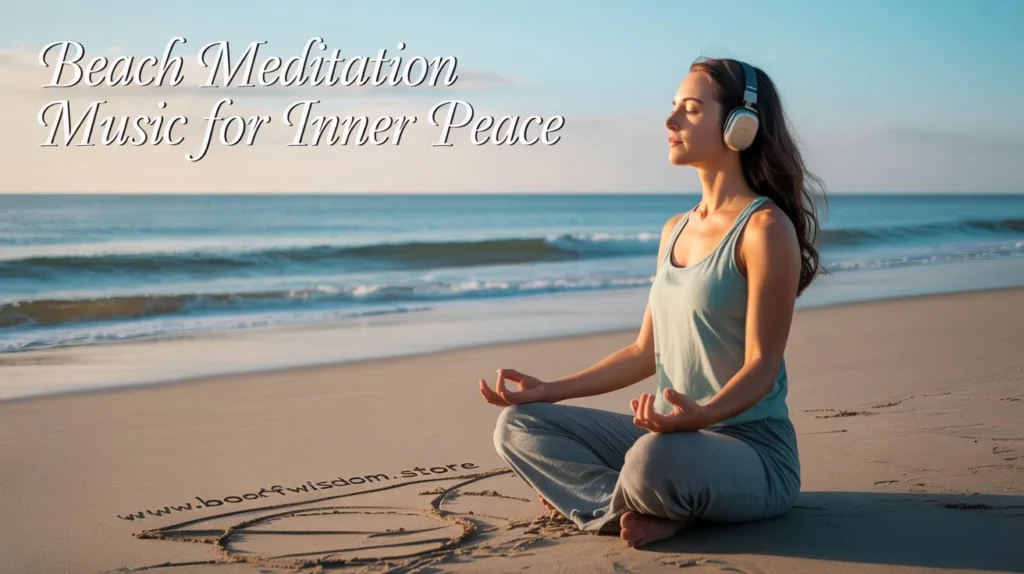
Setting Intentions
Before each session, take a moment to set an intention. This doesn’t need to be elaborate—a simple statement like “I’m here to find peace” or “I’m practicing presence” gives your meditation direction without rigidity.
Your intention might change based on what you need. Some days you might seek calm, other days clarity or connection. Maybe you’re meditating on the beach to process grief, celebrate joy, or simply be. Whatever your intention, naming it creates a container for your practice.
Consider seasonal or lunar intentions as well. New moon beach meditations might focus on new beginnings, while full moon sessions could emphasize release and letting go. Summer meditation might explore abundance, winter sessions could cultivate inner warmth. Aligning your practice with natural cycles deepens your connection to the environment.
Duration and Frequency
How long and how often should you practice beach meditation? The honest answer is: whatever you’ll actually do consistently. A sincere ten-minute session three times a week beats an ambitious hour-long practice you manage once a month.
Start conservatively. If you’re new to meditation, begin with five to ten minutes. The beach environment is so supportive that even brief sessions can feel significant. As your practice develops, you’ll naturally want to sit longer.
Many practitioners find that morning beach meditation, even just fifteen minutes, positively impacts their entire day. Others prefer longer weekly sessions—perhaps an hour every Sunday morning. Experiment to find what serves you best, and remember that your routine can evolve as your life circumstances and practice deepen.
Journaling Your Experience
Keep a beach meditation journal to track your journey. Immediately after each session, while insights are fresh, write down what you noticed, felt, or realized. These don’t need to be profound spiritual revelations—sometimes the most valuable notes are simple observations about how your body felt or what emotions arose.
Over time, patterns emerge. You might notice that certain weather conditions affect your meditation quality, or that particular times of day consistently yield deeper experiences. You’ll see your progress, which can be encouraging during periods when practice feels stagnant.
Your journal also becomes a personal record of your relationship with the beach and meditation. Years from now, you’ll treasure these snapshots of your inner landscape captured at the ocean’s edge.
Experience the serene power of the ocean — listen to the same meditation music used by gurus and yogis on the beach, and awaken your inner peace today Buy Premium Meditation Music Now
Long Beach Meditation Communities and Classes
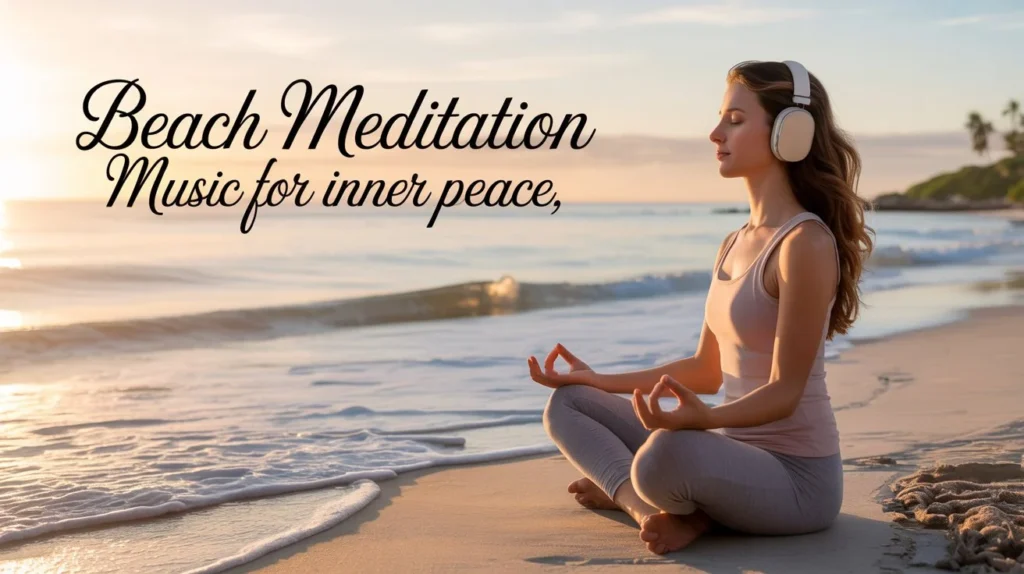
Group Meditation Sessions
There’s something powerful about meditating with others, even if you’re practicing silently. The collective energy creates what practitioners call a “group field” that can deepen individual experiences. Long Beach offers various group meditation opportunities specifically designed for the beach setting.
Search for “long beach meditation long beach ca” to find current group offerings. Many are free or donation-based, welcoming all experience levels. Showing up to a group session removes the planning burden—someone else has already chosen the spot, time, and provided any necessary instruction. You simply arrive and practice.
Group meditation also provides accountability and community. You’re more likely to maintain a consistent practice when you know others are expecting you. Plus, you might make meaningful connections with fellow practitioners who share your interest in meditating at the beach.
Guided Beach Meditation Experiences
For those new to meditation or wanting to deepen their practice, guided beach meditation classes offer valuable structure. An experienced teacher leads you through techniques specifically designed for the coastal environment, helping you make the most of the natural setting.
These sessions often incorporate elements beyond basic meditation—perhaps gentle yoga, breathwork, or sound healing with singing bowls. The beach’s natural acoustics make it ideal for sound-based practices. Some guides incorporate the four elements (earth, water, air, fire/sun) into their teaching, creating a holistic experience.
Look for teachers who specialize in outdoor and nature-based meditation. Their approach will differ from studio-based instruction, taking full advantage of the unique opportunities the beach provides. Many offer both regular classes and special event sessions like full moon meditations or solstice celebrations.
The Science Behind Beach Meditation
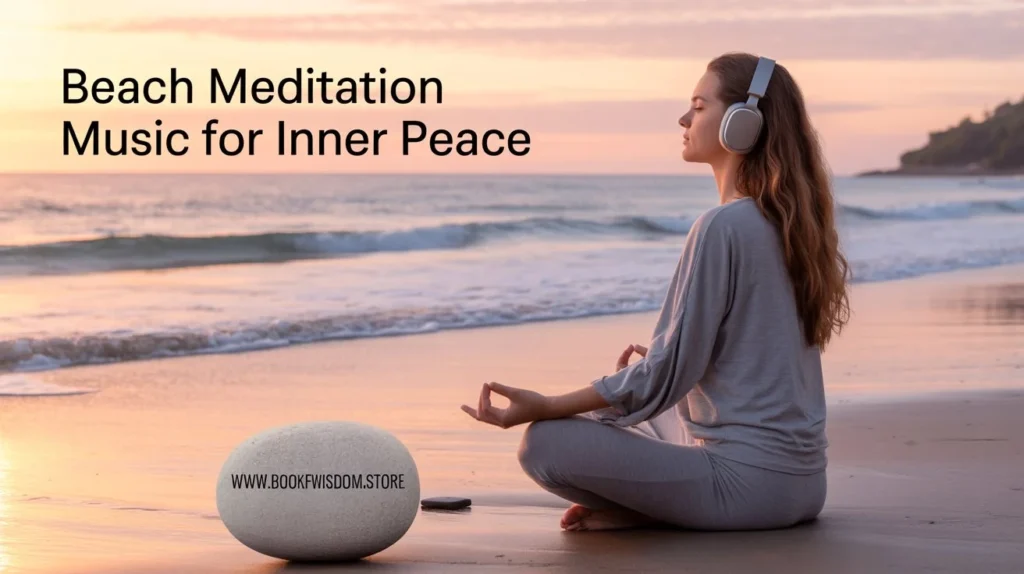
How Nature Impacts the Brain
Neuroscience confirms what beach lovers have always known intuitively—coastal environments positively affect brain function. Studies using EEG and fMRI technology show that natural settings activate the prefrontal cortex while quieting the amygdala, our fear and stress center.
The concept of “blue space”—proximity to water—specifically reduces rumination, that repetitive negative thinking associated with anxiety and depression. Researchers have found that people living near coasts report better mental health across multiple measures. When you combine this inherent benefit with intentional meditation practice, you’re working with your brain’s natural tendencies rather than against them.
The fractal patterns in nature—the way waves repeat similar shapes at different scales—have a measurably calming effect on the human nervous system. Our brains are wired to find these patterns pleasing and organizing, which is why even brief exposure to natural environments can restore mental energy.
The Healing Power of Negative Ions
Here’s some fascinating beach science: breaking waves generate negative ions—oxygen atoms charged with an extra electron. These invisible molecules are absorbed through breathing and skin contact, and they produce remarkable effects.
Negative ions increase serotonin levels, explaining that elevated mood you feel at the beach. They also enhance oxygen absorption, improve alertness, and protect against germs and irritants in the air. Some research suggests they reduce depression symptoms comparable to antidepressants, without side effects.
When you’re meditating on the beach, particularly near the surf where ion concentration is highest, you’re literally breathing in natural mood enhancers. The combination of meditation’s proven benefits with this biochemical boost creates a powerful wellness practice.
Experience the serene power of the ocean — listen to the same meditation music used by gurus and yogis on the beach, and awaken your inner peace today Buy Premium Meditation Music Now
Conclusion
Beach meditation offers a gateway to peace that combines ancient wisdom with modern accessibility. Whether you’re exploring the shores of Long Beach, California, or any coastal area, the practice of meditating on the beach provides benefits that extend far beyond your time on the sand. The ocean becomes your teacher, the waves your mantra, and the endless horizon your invitation to expand beyond self-imposed limitations.
Starting a beach meditation practice doesn’t require special equipment, extensive training, or perfect conditions. It simply asks that you show up, sit down, and open your awareness to the natural world around you. The beach does the rest, supporting your practice with its inherent calming energy and timeless rhythms.
As you develop your practice, you’ll discover that meditating at the beach isn’t just about finding peace in that moment—it’s about training your mind to carry that peace into every aspect of your life. The stillness you cultivate while listening to waves remains accessible during traffic jams, difficult conversations, and challenging days. That’s the true gift of this practice.
So take off your shoes, feel the sand between your toes, and discover what waits for you where the ocean meets the soul. Your journey into beach meditation starts with a single breath, a single step, a single moment of choosing presence over distraction. The waves have been practicing their rhythm for millions of years. They’re ready whenever you are.
Experience the serene power of the ocean — listen to the same meditation music used by gurus and yogis on the beach, and awaken your inner peace today Buy Premium Meditation Music Now
FAQs About Beach Meditation
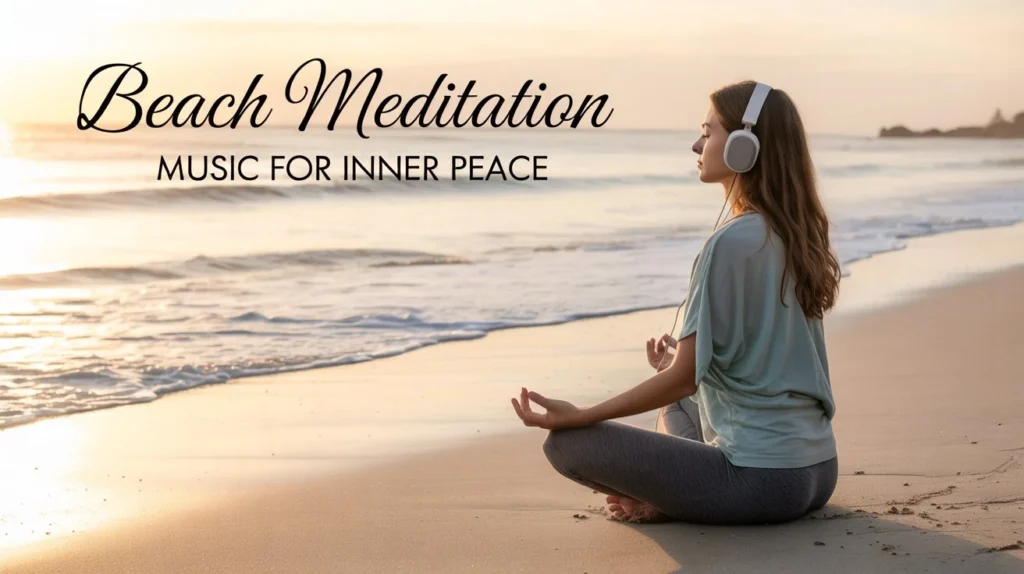
What’s the best time of day for beach meditation?
Early morning, particularly sunrise, is ideal for most people because beaches are quieter, temperatures are comfortable, and the symbolic power of beginning your day with the dawning sun enhances the practice. However, the “best” time is ultimately whatever time you can consistently practice. Sunset offers its own magic for evening reflection, and even midday sessions can work if you find shaded areas or don’t mind the sun and activity.
Do I need prior meditation experience to try meditating on the beach?
Absolutely not! The beach meditation is actually one of the easiest places to start a meditation practice because the environment naturally supports your efforts. The sound of waves provides a built-in focal point, making it easier to concentrate than in silent environments where your mind might race. Beginners often find their first successful meditation experiences happen at the beach because nature does so much of the work for you.
What should I do if I feel self-conscious meditating in public?
Choose less crowded times or locations initially until you build confidence. Remember that most people are focused on their own beach activities and barely notice someone sitting quietly. You can also try walking meditation, which looks like ordinary slow walking and attracts zero attention. Over time, you’ll likely find that your concern about others’ opinions decreases—which is actually a valuable meditation lesson in itself about releasing attachment to external judgments.
Can I meditate on the beach if I can’t sit cross-legged on the ground?
Of course! There’s no single “correct” meditation posture. You can sit in a beach chair, on a cushion with your legs extended, or even lie down (though you might fall asleep). Walking meditation is another excellent option that requires no sitting at all. The key is finding a position that’s comfortable enough to maintain without excessive fidgeting but alert enough to prevent drowsiness. Your body, your choice.
How is beach meditation different from just relaxing at the beach?
While both are beneficial, meditation involves intentional awareness practice rather than passive relaxation. When you’re meditating at the beach, you’re actively training attention, practicing present-moment awareness, and developing mental skills that transfer to daily life. Relaxation happens to you; meditation is something you do. That said, even relaxed beach time has value, and sometimes the line between the two blurs beautifully—which is perfectly fine!







